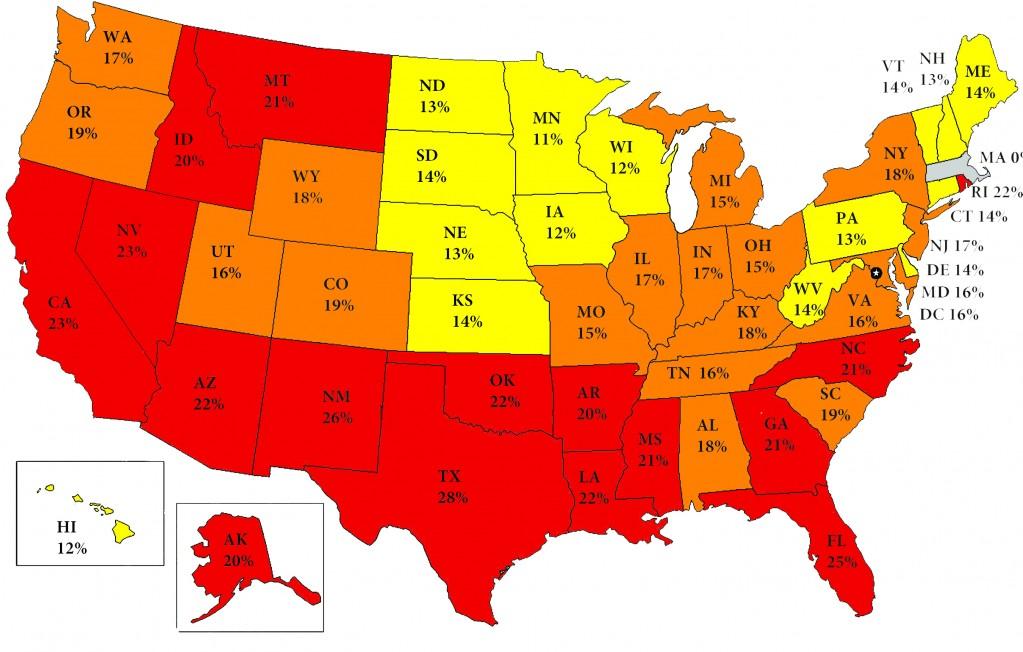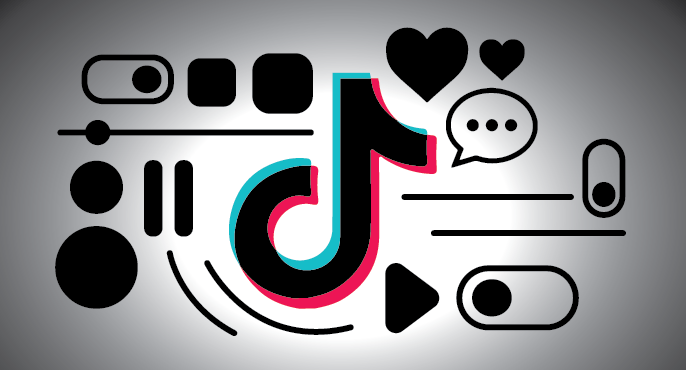By Nina Oberman and Meredith Redick
A Brief History
As the debate over health care reform rages across the nation, it may be easy to forget that 2009 is only one flare-up in the argument’s long history. With his declaration that he will be the last President to take up the cause of health care, however, President Barack Obama is standing on almost 100 years of effort.
Former President Theodore Roosevelt was the first to call for national health insurance when he campaigned on the Progressive Party ticket in 1912, according to a timeline compiled by Elisabeth Goodridge and Sarah Arnquist in The New York Times. He failed to pass a plan in Congress, however, and the next great leap would not be made until 1945 when Harry S. Truman called for a health care overhaul. His 10-year plan proposed compulsory coverage and increased hospital construction, but critics warning of “socialized medicine†barred the plan from passing. The president’s second attempt for reform was abandoned after the outbreak of the Korean War.
President John F. Kennedy would be the next to take up arms in 1962 when he demanded health benefits for social security recipients, but his plan also stalled in Congress. Lyndon B. Johnson made perhaps the most lasting impact with the passage of a bill creating Medicare and Medicaid in 1965. Today, over 45 million elderly Americans are covered under Medicare, and 59 million living at or below the poverty line receive coverage through Medicaid.
President Richard M. Nixon and Senator Edward M. Kennedy faced off in 1971 as Nixon proposed a plan that would require employers to provide a minimum level of insurance to employees, but would maintain competition among private insurers. Kennedy meanwhile proposed a single-payer system in the “Health Security Actâ€, beginning a lifelong effort to reinvent the nation’s health insurance system.
President Jimmy Carter once again called for universal health care in 1976, but the economic recession took precedence. In 1993 President Bill Clinton made a concerted effort in his proposal of a plan to provide universal coverage through a system of “managed competition†in which private insurers could compete under tight regulations. The bill failed to pass for a variety of reasons, including powerful lobbying by doctors, drug companies and insurance companies.
Obama’s efforts will be concentrated on a complex and deeply personal issue that lawmakers have been unable to resolve for almost a century. Amidst the nation’s worst economic crisis since the Great Depression, he is bringing health care reform to the forefront of the U.S. agenda.
The Current System and its Problems
The current U.S. health care system is a diverse amalgam of government-funded programs and a large private sector. Programs such as Medicare, which offers financial support to citizens over 65, and Medicaid, which benefits low-income and disabled citizens, create a safety net for several demographic groups.
America’s working-class families, though, are largely left to the private insurance market, where undeniable flaws have raised controversy throughout the nation.
Steven Lipstein, president and CEO of BJC HealthCare, outlined some of the principal issues in today’s health care system.
“The way the US Congress and the president are approaching this, they divide the health care issues into three big buckets,” Lipstein said. “One is coverage, which is how do you provide access to health insurance coverage for everybody that lives in the United States? The second big challenge would be cost. How do you make that affordable? And then you’ve got quality: everyone wants to have choice of their doctors and their hospitals and their insurance plan, but how do you make sure that people have good choices, that they’re not just getting more health care, but they are getting better health care?â€
Dr. Thomas Steinberg, Associate Professor of Medicine at Washington University, believes the holes in health care are particularly prominent in St. Louis.
“There are a lot of ways in which we are failing to provide good health care to our citizens,” Steinberg said. “St. Louis has a high incidence of STDs, and a few years ago St. Louis City closed their only STD clinic. They used to have a city hospital, and if you had no health care, you could always go there. Most cities used to have these, but more and more of these city hospitals have just evaporated.”
Extraneous layers of bureaucracy prevent money from being spent where it is needed.
“I think that every dollar we spend employing someone to push paper in an insurance company is a dollar not spent immunizing young kids,” Steinberg said. “There is a ton of money being made off of health care in this country, and we’re not very healthy.”
According to a U.S. Census press release, 47 million Americans were without health insurance in 2006.
“I think what American people want is guaranteed access to health insurance,” Lipstein said. “They want health insurance whether they are rich or poor, whether they are employed or not, whether they have a pre-existing medical condition or not.â€
A Costly Dilemma
Most Americans would agree that the role of any health care system is to treat the sick and keep the rest healthy. The US healthcare system, however, does not necessarily fit that description.
A study in the American Journal of Medicine asserted that at least 62 percent of personal bankruptcies filed in 2007 were directly related to medical expenses. Seventy five percent of the people filing for these bankruptcies had health insurance.
These statistics show that having health insurance does not make citizens invulnerable to overwhelming medical costs.
In addition, many today are denied coverage due to pre-existing conditions because insurance companies find it too costly to insure them.
“My wife has multiple sclerosis,†Lipstein said. “If I wasn’t employed by BJC, she would be uninsurable. So I need access to health insurance, because my wife does not have access to health insurance in the individual market. When people are denied access to health insurance and health care just because they have a pre-existing chronic medical condition, I happen to think that is not right.â€
If the goal of the health care system is to provide security to those who need it, the American system may need serious revision. In the current system, citizens with unusually high healthcare costs due to preexisting conditions or diseases such as cancer are often left out of the insurance equation. Most Americans pay their premiums as an effort to shield themselves from scenarios like bankruptcy. But even with insurance, the safety net may not be as sturdy as Americans would like to believe.
Does a Right Exist?
While there are clearly dire problems within the current US health care system, a central question in the debate over reform is whether or not an intrinsic right to health care exists for individuals.
John Mackey, co-founder and CEO of Whole Foods Market, penned a controversial Wall Street Journal editorial in August. He criticized lawmakers for costly policies that would worsen the deficit, and called for a re-thinking of the current health care philosophy.
“Health care is a service that we all need, but just like food and shelter it is best provided through voluntary and mutually beneficial market exchanges,†Mackey said in his editorial. “A careful reading of both the Declaration of Independence and the Constitution will not reveal any intrinsic right to health care, food or shelter.â€
Mackey’s statement raises an important question: should health care be guaranteed for all in America?
“Our government has said that if you come into one of our emergency rooms, citizen or non-citizen, we provide you with medical care,†Lipstein said. “In a civilized society, you just don’t let people suffer. We take care of people that come with great personal need, great fear, great anxiety, and it’s why I do what I do for a living, because it’s a very important thing to do.â€
Steinberg adds that health care is not only an individual moral issue, but also a pragmatic one.
“Society has an interest in making the best use of its human resources, and that means it is in the best interest of society to make the population as healthy as it can be,†Steinberg said. “It is therefore in the best interest of society to provide health care to all members.â€
Still, the government does not provide everything for its citizens. At some point, personal responsibility takes the place of outside aid.
“What I’m advocating for is access to health insurance,†Lipstein said. “I’m not saying it should be free. I think it should be heavily subsidized for people at the lowest end of the income on the scale, but as you go up it should make sense that you should pay more and more for your health care services.â€
The Extremes
The far left and far right advocate two dramatically different plans for an overhaul of the health care system. While some liberals have proposed a single-payer system in which the government would provide coverage for each citizen, conservatives argue that the employer-based system should be abandoned entirely and individuals should buy insurance on their own.
The term “single-payer†derives from the concept that a single government entity manages all health care transactions. Under such a system, every legal resident would be guaranteed coverage.
Dr. Bernard Davis has worked as a doctor for 48 years. He believes the current system is so flawed that the most effective reform would be a complete conversion into a single-payer model.
“Conceptually, I think that a single-payer system would work well,†Davis said. “But you can’t spend 16 percent of the GDP on healthcare. With a modification of the financial model, a government-run health care system might be plausible, but under the current financial model, it is not.â€
Many also express the fear of not having a choice of doctors under a system controlled entirely by the government, as well as fear that the reform would cause long waiting lists for highly needed care.
“Although Canada has a population smaller than California, 830,000 Canadians are currently waiting to be admitted to a hospital or to get treatment,†Mackey said in his editorial. “In England, the waiting list is 1.8 million.â€
On the other end of the spectrum, right-wing reformers call for a system in which the individual insurance market, rather than employer-based insurance, is dominant. Currently, there are tax benefits for employer-provided health insurance, but not for individually purchased health insurance.
Proponents of such reforms argue that giving individuals the freedom to purchase insurance across state lines is also key to lowering costs. The health care system would then become more similar to a free market, and the forces of competition would drive costs down.
Either option would undoubtedly cause a great disruption to the current system. Single-payer and individual market concepts are the extremes; President Obama is attempting to arrive at an effective reform somewhere in between.
Socialized Medicine
Amidst predictions about the future of health care, many Americans are holding up other nations as examples of what could happen to the U.S. health care system. Some nations, including Canada and the countries of the United Kingdom, already operate under a system of government-funded health care.
According to the Organization for Economic Co-operation and Development (OECD), in 2006 the U.K. spent a total of 8.4 percent of its GDP on health care. Canada spent 10.0 percent on health care, and the U.S. spent 15.3 percent. For the same year, the life expectancy at birth for citizens of Canada and the U.K. was notably higher than that of U.S. citizens.
Despite indications that government-funded health care could be tied to lower health care costs and healthier citizens, many Americans believe a government-funded health care system would pose significant problems.
In June, former chief of staff Karl Rove articulated several common oppositions to government-funded health care in a Wall Street Journal editorial. According to Rove, a government-funded option is not only unnecessary and financially inefficient, but it could directly harm patients by placing their needs in the hands of an indifferent government.
“If you think insurance companies are bad, imagine what happens when government is the insurance carrier, with little or no competition and no concern you’ll change to another company,” Rove said in his editorial.
The concept of socialized medicine has raised controversy across the political spectrum.
“Free Market†Health Care
Opponents of government-run health care cite the advantages of free market competition when health insurance is privately operated. Competition, it is said, fosters an incentive to reduce cost, increase quality, and broaden access. In reality, however, health care is not necessarily an industry like any other—and thus does not function wholly as a free market.
“It’s not like going to buy a car and it’s not like going to buy clothes, because there are couple key differences,†Lipstein said. “One is you need insurance. Number two is you need to be able to ascribe value to what you are buying. Take an imaging scan, a CT scan or MRI. It has different value for you if you have a brain aneurysm than it has for you if you had a broken ankle, but it costs the same for me to produce it.â€
In addition, doctors are paid either a legislated price by Medicare or Medicaid or a negotiated price by private insurance companies.
Referring to private health insurance as a free market can therefore be problematic, as it is difficult to value the services in a transparent way. Consumers don’t have the money to buy health care directly without health insurance, and they do not have the expertise or authority to buy without a doctor.
“We sometimes think that people will behave inside the health care economy the same way they behave in other sectors of the economy,†Lipstein said. “But if I put you in the middle of the Galleria with no clothes on, and you’re either fainting, in pain or throwing up and you don’t know what’s causing it, do you think that is going to be a time when you’re a good comparative price shopper?â€
Not only do consumers not behave typically in the health insurance market, but insurance companies also don’t make money in the traditional sense.
“Under the current financial model, an entrepreneurial implementation of it, the reward is making more money, not delivering more service,†Davis said. “In a sense you could say that the big advantage is to take care of people that don’t need it, because then you could get paid for doing nothing.â€
Obama’s Plan
In his speech to a joint session of Congress on Sept. 9, Obama called for a public health insurance option for the uninsured and those who aren’t able to find affordable coverage, as well as a new insurance marketplace for individuals and small businesses to compare plans and buy insurance at competitive prices.
“Since health care represents one-sixth of our economy, I believe it makes more sense to build on what works and fix what doesn’t, rather than try to build an entirely new system from scratch,†Obama said.
The president’s plan would make health insurance mandatory for all citizens in order to drive down costs, and would outlaw discrimination based on pre-existing conditions. No one would be required to purchase health insurance in the government-run public option, and it would be self-sufficient, relying only on the premiums it collects.
Overall, Obama said, the plan would not add a dime to the deficit. But Rep. Charles Boustany, speaking for the GOP in response to the president, thinks otherwise.
“The bill creates 53 new government bureaucracies, adds hundreds of billions to our national debt and raises taxes on job creators by $600 billion,†Boustany said.
While the taxes would be intended to balance the budget, the financial ramifications of the plan are still highly debated.
Sen. Max Baucus, Democrat from Montana, has also proposed a bill that does not include a federal public option, but rather establishes nonprofit insurance cooperatives in each state. These cooperatives would gather a large group of people for their shared need of reasonably priced health care.
Many liberals have criticized the bill, suggesting that co-ops would not be able to compete effectively with big insurance companies. Subsidies for low-income and middle-income families are also less generous, raising doubt as to whether or not insurance would be affordable for all.
Close to the Heart
Regardless of the bill’s fate, the issue of health care remains difficult because it touches Americans on a personal level.
“It’s almost a debate for the soul of the country,” Davis said.
Lipstein supports the idea that the health care issue reaches beyond the political.
“I think part of the reason you’re seeing a lot of concern and anxiety is that health care is very complicated,” Lipstein said. “People already feel like they don’t have enough control over their health care circumstances, and they want to be sure they have options. The government is not supposed to choose for them, and they feel the government is going to take away their choice. Whenever you change the status quo, people feel like there are winners and losers.”
Steinberg agrees that choice plays a role in Americans’ perception of health care.
“I don’t think you can convince them that their personal liberties aren’t going to be taken away, even when they aren’t,” Steinberg said.
Lipstein notes that, out of the many polemics the government handles, health care is the one that Americans find most relevant.
“When they make decisions about defense spending it’s a little bit more removed,” Lipstein said. “Health affects everybody.”
At Home
While debates continue to escalate in Washington, individuals don’t have to look far for a chance to make a difference.
“One of the things gaining attention is that everybody should have a medical home,” Lipstein said. “A medical home could be your primary care physician. It could be a doctor’s office environment or a clinic. You should go through either a face-to-face or online health risk appraisal done through the medical home. Through that health risk appraisal, you should make a commitment to manage and improve your own health. You should have a plan to manage your health.”
Steinberg believes that building awareness is an essential part of improving the health care system.
“When people are in high school, they are young and feel relatively impervious,” Steinberg said. “But sooner or later, years of bad habits will catch up to them. Educating people to take better care of themselves and make healthy life decisions is important.”
The lesson, according to Lipstein, is that everyone has a role in improving the health care system.
“One of the take home rules is that there is a lot we can do to make health care better,” Lipstein said. “We in the health care system can do some of it. You can do some of it, and there is an important role for government to play.”






